Case Studies
In addition to the case studies below that highlight effective recruitment practices, ORWH has created a slide presentation for researchers’ use in presenting the topic of inclusion to colleagues. It may be found in Additional Resources.
Case Studies
Facebook Advertising to Recruit Young, Urban Women into an HIV Prevention Clinical Trial
Recruitment of women, children, and people of color is a vital part of NIH clinical trials. To meet these needs, social media has become a versatile platform for posting targeted advertisements. These tools can be used by researchers to recruit specific clinical trial subjects via targeted advertisements. Researchers from Northeastern University employed Facebook and Instagram advertisements to recruit participants from communities with high HIV rates in an HIV prevention clinical trial. Read the case study
Cervical Cancer Prevention
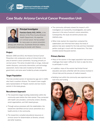 Arizona Cervical Cancer Prevention Unit The Arizona Cervical Cancer Prevention Unit, led by principal investigator Francisco Garcia, M.D., M.P.H., conducted a series of clinical trials focusing on cervical cancer. The series included trials on drugs, molecular marker discovery, community intervention, and technology assessment. The Unit built long-term partnerships with trusted community entities in southern Arizona to overcome barriers such as limited education and economic challenges to increase the number of Hispanic and low-income women in the clinical trials. Read the case study
Arizona Cervical Cancer Prevention Unit The Arizona Cervical Cancer Prevention Unit, led by principal investigator Francisco Garcia, M.D., M.P.H., conducted a series of clinical trials focusing on cervical cancer. The series included trials on drugs, molecular marker discovery, community intervention, and technology assessment. The Unit built long-term partnerships with trusted community entities in southern Arizona to overcome barriers such as limited education and economic challenges to increase the number of Hispanic and low-income women in the clinical trials. Read the case study
Treatments for Menopause Symptoms
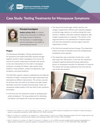 Menopause Strategies, Finding Lasting Answers for Symptoms and Health (MsFLASH)
Menopause Strategies, Finding Lasting Answers for Symptoms and Health (MsFLASH)
MsFLASH, led by principal investigator Andrea LaCroix, Ph.D., brought together a network of women’s health investigators from across the country to conduct randomized controlled trials quickly to test new interventions for the relief of menopause symptoms. MsFLASH used mailings and screening phone calls to recruit and screen women from age 40 to 62 for different trials, including medication, exercise, and hormone therapy trials. Investigators modified their methodology to improve recruitment and retention, centralize processes, and recruit more qualified participants. Read the case study
Caries Prevention in Young Children
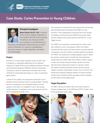 Center to Address Disparities in Oral Health (CAN DO)
Center to Address Disparities in Oral Health (CAN DO)
CAN DO, led by Stuart Gansky, Dr.P.H., M.S., is a multi-project research center and conducted a series of randomized control trials to test methods for preventing tooth decay, or caries, in preschool-aged children. Trials involved the parents, particularly the mother of children and participants were mainly from Latino or Chinese backgrounds. CAN DO utilized community outreach, local partnerships, and culturally relevant approaches to successfully recruit and retain study participants. Read the case study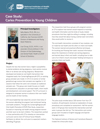 CenteringPregnancy® Oral Health Promotion (CPOP) Pilot Study
CenteringPregnancy® Oral Health Promotion (CPOP) Pilot Study
CPOP, led by principal investigators Sally Adams, Ph.D., R.N., and Lisa Chung, D.D.S., M.P.H., tested an intervention to improve oral health of pregnant women. CPOP researchers recruited pregnant women from the CenteringPregnancy® prenatal care program. Researchers incentivized recruitment and retention by addressing the time concerns and family responsibilities of participants. Read the case study
Diabetes Prevention
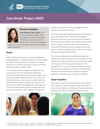 Project HEED (Help Educate to Eliminate Diseases) was a diabetes prevention pilot project using a community-based, participatory research model led by principal investigator Carol Horowitz, M.D., M.P.H. Project HEED targeted low-income women in East Harlem with a body mass index above 25 who did not think they had diabetes or prediabetes. Most participants were racial and ethnic minorities. Researchers worked closely with a community group to develop trust and better understand the community and used those connections, trust, and culturally relevant strategies to recruit qualified participants. Read the case study
Project HEED (Help Educate to Eliminate Diseases) was a diabetes prevention pilot project using a community-based, participatory research model led by principal investigator Carol Horowitz, M.D., M.P.H. Project HEED targeted low-income women in East Harlem with a body mass index above 25 who did not think they had diabetes or prediabetes. Most participants were racial and ethnic minorities. Researchers worked closely with a community group to develop trust and better understand the community and used those connections, trust, and culturally relevant strategies to recruit qualified participants. Read the case study

